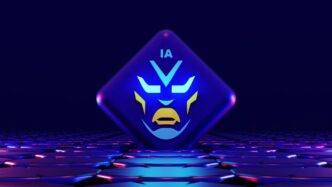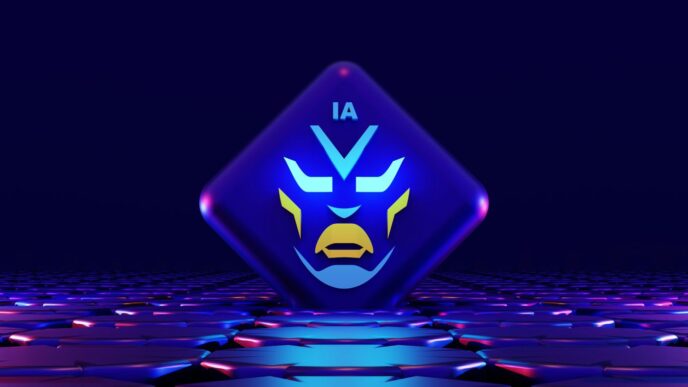Artificial intelligence is everywhere these days, from the apps on your phone to the cars on the road. If you want to get started with AI, you don’t need to spend a lot of money. MIT free AI courses are a great way to learn the basics and even some advanced topics, all from your own home. Whether you’re just curious about how AI works or you want to switch careers, these courses can help. And the best part? You can learn at your own pace, no matter your background.
Key Takeaways
- MIT free AI courses are open to anyone, making them easy to access no matter where you live.
- You’ll find classes that cover everything from basic AI ideas to more technical skills like machine learning with Python.
- Many of the courses include hands-on projects, so you get to practice what you learn right away.
- MIT’s online courses let you study when it works best for you, perfect for busy schedules.
- Finishing these courses can help you understand AI better and might even make your resume stand out.
Why Learn AI With MIT Free AI Courses
Benefits of MIT Open Learning
MIT’s free AI courses bring what’s taught on campus straight to your screen. You’re not just reading dry textbooks or skimming boring PowerPoints; you’re getting real lectures, notes, and hands-on materials straight from the actual classrooms. The chance to study from world-class instructors, without the high cost of tuition, lowers the barrier for anyone who’s curious about AI. Some highlights include:
- Course materials (videos, assignments, even exams) are the same as those MIT students use
- Up-to-date topics: From the basics through machine learning, algorithms and AI ethics
- Community support through discussion boards and global forums
It isn’t just about ticking a box – learning through MIT Open Learning means you can go as slow or as fast as you want, which keeps things less stressful compared to packed in-person schedules.
Accessibility and Flexibility for All Learners
Here’s the thing: not everyone lives near a top university or has the cash for expensive degrees. MIT’s approach through platforms like MIT OpenCourseWare and MITx makes AI learning possible for the working parent, the night owl, or even the person living somewhere without steady internet. The courses allow you to:
- Start and stop at any time, no strict deadlines
- Download materials for offline review
- Join classes with people from all walks of life
This way, you don’t feel rushed and you can actually fit learning into your day-to-day life—whether you’ve got a spare hour after work, or you’re just squeezing in lessons over the weekend. Flexible, yes, but still structured enough to keep you moving forward.
Recognition and Value in the Industry
Let’s be honest, lots of folks want their resume to stand out. MIT’s name carries weight in the tech world (and beyond). Even if you’re teaching yourself, listing MIT Open Learning courses gives your profile a solid boost. Here’s a quick rundown of what this means for your career:
| Reason to Study with MIT | Impact on Career |
|---|---|
| MIT’s global reputation | More serious job consideration |
| Aligned with real workforce skills | Prepares you for what employers ask in interviews |
| Access to well-structured projects | Proves hands-on experience, not just theory |
You don’t get a traditional degree, sure, but companies understand the value of MIT courses—especially when you complete projects or master technical concepts. If you’re switching jobs or want to dig into AI, it’s a strong way to show commitment and technical skill.
Exploring MIT’s Top Free AI Courses Online

MIT’s free online AI courses reach all kinds of learners, whether you’re just getting started or you’ve already written your first machine learning script. They’re meant to open up complex topics so anyone curious about AI can learn at their own pace. Here’s a walk-through of the best ones you’ll find at MIT OpenCourseWare and MITx, along with what you can expect from each.
AI 101: Artificial Intelligence Fundamentals
If you’re the sort of person who’s never coded or who wonders what AI even really is, this is the course for you. AI 101 introduces basic concepts that every newcomer needs to grasp, such as how machines can "think," solve problems, and "learn" from data. You’ll work through these topics:
- What AI is and what it isn’t
- Classic AI problems and how to solve them
- Breaking down real-life AI examples (like voice assistants or recommendation systems)
Self-study and video lectures mean you set your timetable. Assignments are basic — usually short quizzes or practical cases. If you’re worried about being lost in tech jargon, this course is the safe first choice.
Introduction to Computational Thinking and Data Science
This one’s not strictly just for AI, but it’s a backbone course. You’ll get the tools needed to tackle problems with computers, which is at the heart of data science and machine learning. You’ll learn:
- How to think through real-world situations like a programmer
- How to analyze and visualize data
- Python basics and using libraries like NumPy and matplotlib
There are hands-on tasks: writing small programs, solving logic problems, and working with real datasets. You don’t have to be a math whiz, but some high-school math is useful.
Introduction to Machine Learning
Now you’re getting into the meat of AI. This course isn’t afraid to throw bigger ideas your way—think prediction algorithms, neural nets, and how computers "learn" from messy data.
Highlights include:
- Understanding models (like decision trees and linear regression)
- Making predictions with data and checking how accurate they are
- Introduction to deep learning (yes, those are the brain-inspired models)
Assignments here can be tougher and may expect some coding. But everything is broken into digestible pieces, and all materials (videos, readings, problem sets) are freely available to help keep you on track.
You might find these courses offered under different names or with new modules as MIT updates them, but the core ideas stay the same: foundation, practice, and Python code. If the MIT stamp matters to you, or if you just love direct explanations and practical problems, these courses are a solid path forward.
Diving Into Technical Topics With MIT AI Programs
If you’re serious about building real skills in artificial intelligence, MIT’s online free programs cover the guts of what makes AI tick. You won’t just hear about big ideas—you’ll get practical experience through hands-on coding, algorithm analysis, and math focused on what people actually use in workplaces and research labs. Let’s get into what a few courses offer.
Machine Learning With Python: From Linear Models to Deep Learning
This course doesn’t waste time with fluff. Right from the start, you’re coding with Python and working through core concepts like:
- Linear models: Understand the building blocks behind regression and classification.
- Deep learning basics: Tinker with neural networks and get an up-close view of how machines can "learn" from data.
- Reinforcement learning: See how algorithms can make decisions over time, a must-know for anyone thinking about robotics, games, or automation.
You’ll work through datasets, tune models, and debug your own code. If you’re stuck, you’ll need to figure things out—with real programming, not just watching lectures.
Introduction to Algorithms and Computational Problem Solving
This isn’t just for math lovers—anyone wanting to write better code needs solid algorithms. MIT’s approach is hands-on, with topics like:
- Sorting and searching — how to process data fast and efficiently.
- Graphs and networks — for problems like navigation and connecting information.
- Dynamic programming — a clever technique you’ll recognize from interview questions and real tech.
Here’s a quick look at a few core algorithms studied, plus typical real-world uses:
| Algorithm | Typical Use |
|---|---|
| Dijkstra’s | Shortest-paths (navigation) |
| QuickSort | Fast data sorting |
| BFS/DFS | Social networks, game logic |
These are the tools employers wish people knew. You’ll be writing code to actually solve problems (and learning what makes one solution better than another).
Matrix Calculus for Machine Learning
You may hear people talk about how linear algebra is everywhere in AI, but most tutorials skip the calculus part. Not here. MIT walks you through just enough to:
- Break down neural network math in small, understandable steps.
- See how gradients work for training algorithms.
- Apply those numbers directly to coding up your first models by hand.
And it’s not just theory. You’ll learn how to set up equations and see what happens when algorithms learn—from the numbers up.
MIT’s technical AI programs make you roll up your sleeves, code, and really understand the backbone of artificial intelligence. They’re a step above typical beginner courses, and if you finish, you’ll have the skills (and projects) to prove it.
Real-World Applications Taught In MIT AI Courses

MIT’s free online AI courses don’t just cover theory—they walk you through real applications that turn complex tools into something practical. If you want to see how AI actually works in business, science, and daily life, these classes are worth your time. Here’s a breakdown of how MIT covers industry use, hands-on skills, and broad AI adoption.
Machine Vision and Image Analysis
MIT offers coursework focused on teaching how machines “see” with image analysis. You get to learn about core topics like how images are formed, filtering, binary image processing, and the basics of generating symbolic descriptions from real-world environments. What does this mean in the real world? Things like face detection on your phone, checking for flaws on factory lines, or even guiding self-driving vehicles. Image analysis has become vital for:
- Security (face and object recognition)
- Medical diagnostics (reading X-rays or MRIs)
- Retail (automated checkout and inventory tracking)
Hands-On Python Projects for AI
Theory only gets you so far, especially in the world of artificial intelligence. MIT’s approach mixes concepts with real projects. For example, some courses offer hands-on Python assignments: building classifiers, designing simple chatbots, or analyzing text data. You can expect to:
- Work with real datasets from industries like healthcare, finance, or e-commerce
- Train machine learning models and see how algorithms learn
- Debug projects when the model gives you nonsense results—trust me, it happens
Want a closer look at using AI practically? MIT’s online programs let you apply techniques in areas like natural language processing and computer vision for real-life scenarios.
Use Cases Across Industries
AI’s reach is expanding, and MIT wants you prepared for all that. Their coursework breaks down how AI is being used every day across many sectors. Here’s a quick table highlighting some real-world use cases explored in their online materials:
| Industry | Example Application | Technology Taught |
|---|---|---|
| Healthcare | Disease risk prediction | Machine learning |
| Automotive | Self-driving vehicle vision | Computer vision |
| Retail | Automated customer insights | Data analysis, NLP |
| Manufacturing | Defect detection in assembly | Image analysis |
| Business | Chatbots for support | Natural Language Proc. |
By breaking down use cases, MIT makes it clear: AI isn’t just for tech companies. It’s changing how everyone works. The courses don’t just talk about what’s possible—they get you to try it out.
If you’re the type who learns best by doing, or just wants to know how AI affects your field, the mix of real-world context and hands-on practice in MIT’s free programs is a solid way to get started.
Focusing on Ethics and Societal Impact in AI Education
AI keeps popping up in almost every part of our lives these days. It’s not just about machines being smart; it’s also about how they make choices, who benefits, and who bears the risks. MIT’s free AI courses don’t skip these tough conversations—they make them a key part of learning. The courses go past code, zeroing in on problems like bias, fairness, and the bigger social picture.
Courses on AI Bias and Fairness
When you hear about AI, you might think it’s all math and programming. But real AI systems sometimes get things wrong in ways that hurt people. MIT’s curriculum gets into how machine-learning models can reflect hidden bias from the data they’re trained on. Here’s what stands out in these courses:
- You’ll walk through real examples of unfair AI outputs, not just theory.
- The lessons show how bias creeps in—and what can actually be done to reduce it.
- Material includes strategies for testing fairness and measuring the impact of algorithms on different groups.
Understanding and fixing these issues is important for anyone who builds or uses AI tools.
Ethics for Engineers: Understanding AI Responsibility
Being able to build something doesn’t mean you should. That’s one of the ideas that MIT stresses in their engineering ethics courses focused on artificial intelligence. These classes push students to look at questions like:
- When should AI not be used?
- Whose values are shaping the technology?
- What happens when things go wrong—or when AI is used in unexpected ways?
They’re not just reading articles. There are case studies, heated class debates, and honest looks at past public failures and scandals in the tech world. By the end, it’s pretty clear that responsibility isn’t just a checkbox—it needs to be part of the whole process, from idea to deployment.
Societal Changes Influenced by Artificial Intelligence
How AI changes everyday life is a big topic, and MIT breaks it down in ways that are easy to relate to. Their lessons point out that AI isn’t just about what happens in labs:
- It’s already changing jobs, privacy, and even how we trust what we see and hear online.
- Some fields, like healthcare and criminal justice, have seen huge benefits and some big headaches from the way AI gets used.
- Students look at studies showing how different industries and communities respond to new tech.
Here’s a rundown of a few areas they highlight:
| Domain | Common AI-Driven Changes |
|---|---|
| Healthcare | Faster diagnostics, treatment risks |
| Hiring Processes | Automated screenings, bias risks |
| News/Media | Deepfakes, disinformation concerns |
| Transportation | Safer roads, job changes |
MIT wants students to get why everyone is talking about AI—not just for the techy bits, but for the real-life messiness. That way, when MIT learners step out into the world, they’re thinking bigger and smarter about what AI should (and shouldn’t) do.
Pathways for Beginners and Advanced Learners at MIT
MIT’s free online AI courses aren’t just one-size-fits-all. Anyone can find a starting point, whether you’re barely comfortable with the basics of computers, or you already work in data science and want to go further. MIT’s open learning approach means you set your own pace and choose your own path. Here’s what that looks like in practice:
Self-Paced Study Options
It’s nice not to worry about a ticking clock. MIT lets you move through courses whenever and however you want. Here’s how their self-paced setup benefits different learners:
- Courses remain available online year-round—pause and return as life requires.
- No deadlines for video lectures, readings, or assignments.
- Option to revisit materials or skip ahead based on your experience.
| Course Format | Is it Self-Paced? | Typical Time to Finish |
|---|---|---|
| OCW (OpenCourseWare) | Yes | 4–12 weeks |
| MITx on edX | Yes/Varies | 4–16 weeks |
Support for Non-Technical Learners
Not everyone comes in with a math or coding background. MIT courses often give:
- Plain-language introductions in beginner courses like "AI 101."
- Sample code and guided exercises, especially in Python.
- Discussion boards and learner forums—so you can ask what might feel like silly questions (they never are).
Even if you get stuck, there’s a good chance someone else is working through the same challenge. Many course creators also provide recommended extra reading or tips for newbies.
Challenging Projects for Experienced Students
Already feel comfortable with the basics? There are options to push yourself:
- Work on hands-on coding assignments that mirror real-world AI problems.
- Explore case studies from industries—sometimes straight from MIT research labs.
- Deep-dive into advanced algorithms, mathematical proofs, or complete end-to-end machine learning builds.
If you’re aiming for something more tangible, some courses provide certificates of completion (for a fee) or open-ended capstone projects. These projects let you show off what you’ve learned to future employers or collaborators.
MIT’s AI courses make room for all learners. Whether you want the gentle on-ramp or the technical mountain climb, there’s a place for you to start—and to keep growing.
Wrapping Up: MIT’s Free AI Courses Are Worth a Look
So, that’s the scoop on MIT’s free AI courses. If you’re curious about artificial intelligence or want to pick up some new skills, these classes are a pretty good place to start. You don’t need a fancy background or a ton of experience—just a bit of time and the willingness to learn. The cool thing is, you can go at your own pace, and most of the material is straight from the folks who actually teach at MIT. Whether you’re thinking about a career change, want to keep up with the tech world, or just like learning new stuff, these courses can help you get there. Give one a try and see where it takes you. Who knows? You might end up surprising yourself.
Frequently Asked Questions
Are MIT’s free AI courses really free for everyone?
Yes, most of MIT’s online AI courses are free for anyone. You can watch the lectures, read the materials, and complete assignments without paying. If you want a certificate, there may be a fee, but learning the content is free.
Do I need to know a lot of math or coding before starting?
No, you don’t need to be an expert. Some beginner courses are made for people with little or no background in math or programming. As you move to harder courses, some basic math or Python skills will help.
How long does it take to finish a course?
It depends on the course. Some can be finished in a few weeks if you study a couple of hours each week. Others, especially the more advanced ones, might take a few months. The good news is that most courses are self-paced, so you can go as fast or slow as you want.
Will I get a certificate from MIT if I complete a free AI course?
You can get a certificate for many courses, but usually there’s a small fee for it. If you just want to learn, you don’t have to pay anything. The certificate is helpful if you want to show proof of your skills to schools or employers.
Can these courses help me get a job in AI?
MIT’s free AI courses teach you important skills that many companies look for. While a single course might not be enough for a job, finishing several and doing the projects can help you build a strong resume and show what you know.
Are these courses good for people who aren’t good at computers?
Yes! MIT offers some courses that are friendly to beginners, even if you’re not a computer whiz. They explain things clearly and start with the basics, so anyone who’s willing to learn can follow along.














